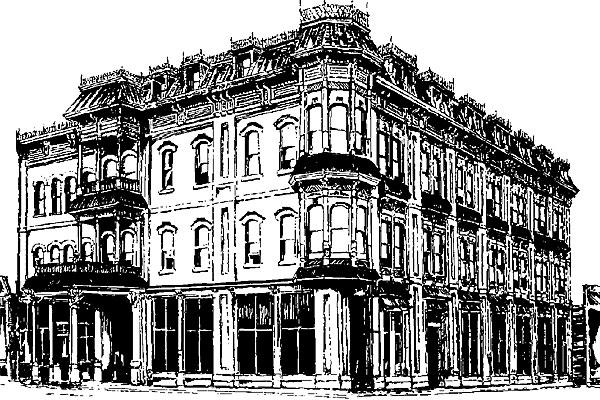 Recall that powerful scene in the 1993 movie Tombstone in which Wyatt Earp (Kurt Russell) sat by the bedside of his dying friend Doc Holliday (Val Kilmer), playing cards.
Recall that powerful scene in the 1993 movie Tombstone in which Wyatt Earp (Kurt Russell) sat by the bedside of his dying friend Doc Holliday (Val Kilmer), playing cards.
The setting for this drama was a Glenwood Springs, Colorado, tuberculosis (TB) sanitarium or hospital that specialized in treating patients with this crippling and frequently terminal illness. Doc actually died in a room in the Hotel Glenwood in this Colorado town on November 8, 1887. He was only 36 years old.
The quiet, clean, idyllic sanitarium setting depicted in the movie Tombstone simply did not exist in this town at the time of Doc’s death or, for that matter, in the whole state of Colorado. Apparently, however, Doc, like others afflicted with TB, sought out the Glenwood Springs environment for the suggested healing effects of its hot springs and clean, dry mountain air.
According to the U.S. Centers for Disease Control and Prevention in Atlanta, “TB disease is caused by a bacterium called Mycobacterium tuberculosis. The bacteria usually attack the lungs, but TB bacteria can attack any part of the body such as the kidney, spine and brain. If not treated properly, TB disease can be fatal.”
Back in Doc’s days, the cause of TB had only been recently discovered. After initial research on Anthrax, the great German-born physician Robert Koch discovered the tubercle bacillus in 1882, along with a method for staining it and growing it in a pure culture. For this discovery and a lifetime of other important work, he was awarded the Nobel Prize in Medicine in 1905.
In the days before TB was understood, doctors from all over the United States frequently suggested that their TB patients move out West to live in the mountains where the climate was dry and the air was pure. In Doc’s final days, frontier physicians understood that TB could be spread by droplets from the respiratory tract of coughing TB patients and to a much lesser degree from the bloody mucus caught on handkerchiefs or clothing. Since there was no medical cure for TB at that time, the most important method of disease control was to isolate patients, often, if they could afford it, in a privately owned TB hospital or sanitarium.
In her 2009 article “Tuberculosis: A Journey Across Time,” Dr. Mindy Schwartz noted that the sanitarium movement or the establishment of places to treat (and isolate) chronic diseases was initially started in Silesia (central Europe) in 1859. She added, “In 1884, Edward Livingston Trudeau pioneered sanitaria in the U.S. with the creation of the Adirondack Cottage Sanitarium in Saranac Lake, New York.”
Within a few years, Colorado followed this trend with the rapid development of sanitaria beginning in the city of Colorado Springs. “Colorado Springs is the city tuberculosis built…,” reported R. Scott Rappold in his June 17, 2007, article for the Colorado Springs Gazette. “From the city’s founding [in 1871], the treatment of TB became a major industry that employed thousands and brought population and wealth into this small frontier town….”
Beginning in 1890 the widow of a TB patient opened the Glockner Sanitarium where patients could be treated for a dollar a day. This Colorado Springs institution was followed by many others with varying amenities. The Cragmor Sanitarium established in 1905 was “reported to be like a cruise ship,” with late night parties and its own literary magazine, whereas others “amounted to tent cities on the outskirts of town.”
On June 19, 2007, just two days after the Rappold article (perhaps by coincidence or to maintain “home field advantage”), Willa Soncarty published a “Frontier Diary” installment in the Glenwood Springs Post Independent. Soncarty, registrar of the town’s Frontier Historical Society and Museum, asserted, “On January 1, 1887, the [nearby] Aspen Daily News…called Glenwood Springs ‘the great sanitarium.’ In this declaration, the sanitarium was not a specific hospital, but instead the [entire] town itself.”
Whatever Hollywood’s intention in misrepresenting the exact site of Doc’s final moments, including the card game with his friend Wyatt Earp, Tombstone correctly depicted an idealized version of a medical sanctuary for patients suffering from TB in the frontier West. The film even included the rule forbidding the wearing of boots in bed.






